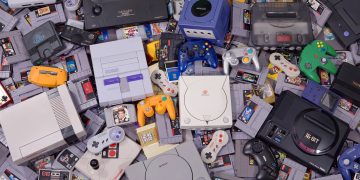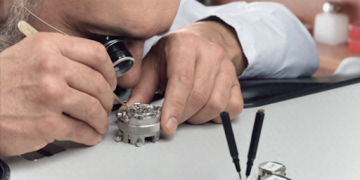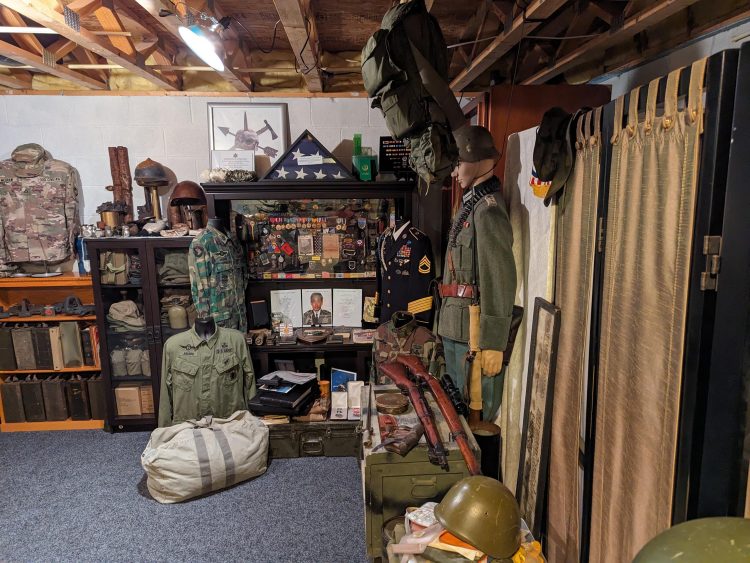In the world of collecting, some of the most unexpected and unusual items gain value when they are linked to conflict and war. From relics of ancient battles to more contemporary items tied to recent conflicts, war zones have emerged as unlikely hotspots for collectors seeking to acquire items that tell a story, carry historical weight, and represent an era of chaos, struggle, and survival. Whether it’s military memorabilia, pieces of destroyed architecture, or even personal items once owned by soldiers, the market for war-related collectibles has exploded in recent years.
In this article, we will explore the growing trend of war zone collectibles, tracking how conflict-related items have become sought-after treasures. We will also delve into the ethical considerations that come with this trend, asking whether collecting war artifacts is a form of preservation or exploitation. As the world becomes increasingly aware of the complexities surrounding the acquisition of items from war zones, the question remains: how do we draw the line between cultural preservation and the commodification of human suffering?
War Zones as Collectibles Hotspots
While the notion of collecting war-related artifacts is nothing new, the modern market for such items has expanded in ways few would have anticipated. War zones, especially those in the midst of ongoing conflict, are becoming hotspots for collectors, historians, and even investors, all seeking unique and rare pieces that represent the human costs of war. These items can range from military uniforms, weapons, and vehicles to personal objects—such as letters, diaries, and photographs—belonging to soldiers who have fought in these conflicts.
The rise of this trend can be traced back to the increasing popularity of conflict-related documentaries, news coverage, and global interest in modern history. As these stories unfold in real-time, collectors and investors are driven to acquire items that represent specific moments in history. The allure is not only the physical objects themselves but also the narratives that they carry: the power of these artifacts to bridge the past and present, providing a direct connection to events that shaped the world.
The Items That Fetch the Highest Prices
Among the various items being collected from war zones, some have reached extraordinary prices at auctions, attracting both collectors and investors alike. These items often come from highly publicized conflicts or from individuals who have achieved notoriety during the wars in which they participated. Some of the most common collectibles include:
1. Military Uniforms and Medals: These items are among the most prized in the war memorabilia market. Military uniforms worn by high-ranking officers or soldiers involved in significant battles can fetch thousands, if not millions, of dollars, especially if they are linked to famous conflicts or military figures. Medals and insignia, particularly those awarded for acts of valor, also command high prices and are often seen as badges of honor, representing personal and historical significance.
2. Weapons and Military Equipment: Firearms, tanks, fighter jets, and even rocket launchers used in famous conflicts have become highly sought after. Collectors of military gear value these objects for their craftsmanship, historical significance, and the stories they represent. Many collectors believe that possessing a piece of military history offers them a tangible connection to the past and serves as a reminder of the sacrifices made during times of war.

3. Personal Artifacts: Personal items, such as diaries, letters, photographs, and keepsakes, provide a deeply emotional connection to the soldiers who carried them. These artifacts offer a rare glimpse into the lives of individuals caught in the maelstrom of war, making them particularly valuable for collectors who seek a deeper understanding of history. Letters written by soldiers during wartime can be especially poignant, providing firsthand accounts of life in conflict zones.
4. Ruins and Debris: Surprisingly, remnants of destroyed buildings and infrastructure from war zones are also becoming valuable collectibles. As cities are destroyed in conflict, debris—whether it be pieces of bombed-out buildings, crumbled statues, or damaged monuments—can hold significant historical value. This type of artifact is often sought after by collectors interested in preserving the physical remnants of important locations and events.
The Role of Technology in War Zone Collecting
The role of technology in modern war zone collecting cannot be overstated. With the rise of digital platforms, auctions, and online marketplaces, it has become easier than ever for collectors to acquire items from conflict zones around the world. Social media platforms have also contributed to this trend, as collectors share their acquisitions and discoveries, further fueling the market for war-related memorabilia.
Digital technology has also made it possible for collectors to preserve and authenticate items from war zones more easily. High-resolution scanning, digital cataloging, and blockchain technology have provided new ways to verify the provenance of artifacts, reducing the risk of fraud and increasing transparency in the collecting process. These technological advancements are particularly important when dealing with war-related artifacts, as they help ensure that these items are genuine and that their histories are accurately documented.
Preservation vs. Exploitation: The Ethical Dilemma
While the growing interest in war zone collectibles has created a thriving market, it has also raised significant ethical questions. At the heart of the debate lies the tension between preservation and exploitation. Collectors often argue that acquiring war-related artifacts helps preserve history, ensuring that future generations can learn from past conflicts and understand their impact on the world. Museums and academic institutions also play a key role in this preservation effort, working to safeguard these items for educational purposes and historical documentation.
However, critics argue that the commodification of war artifacts—especially those collected from ongoing conflict zones—can be seen as a form of exploitation. They point out that the act of collecting items from war zones can inadvertently profit from human suffering. By purchasing artifacts tied to violent conflicts, collectors and investors may inadvertently encourage the continued looting of war zones, as individuals or groups seek to profit from the sale of these items.
Moreover, many argue that the focus on collecting war-related memorabilia can obscure the true costs of conflict—the human lives lost, the families torn apart, and the long-lasting psychological trauma experienced by survivors. The risk of commodifying these tragedies is high, as it can reduce the significance of war to mere objects of aesthetic value or financial investment.
The Role of War Museums and Conflict Zones
In some cases, museums and institutions that focus on war history have become central players in the ethical conversation surrounding conflict-related collectibles. These museums often acquire artifacts directly from conflict zones, either through donation, purchase, or acquisition via legal means. Many also take on the responsibility of ensuring that these items are used for educational purposes, shedding light on the broader human stories behind the artifacts.
However, this presents a problem when items are obtained from areas where the ongoing conflict complicates the process of acquisition. In regions where war has ravaged infrastructure, looting and black market activities thrive. The question remains: is it ethical for institutions or private collectors to purchase artifacts from areas where looting is prevalent? Are these items truly being preserved, or are they just another form of economic exploitation in a region already struggling to recover from violence?
Some have argued that ethical collecting in war zones can only occur through careful and transparent methods that ensure the legitimacy and provenance of the items being acquired. Collectors must also be sensitive to the impact that their purchases may have on local communities. The use of artifacts for profit should not come at the expense of the dignity and memory of the individuals and communities affected by war.
The Dark Side of the War Collecting Market
While the ethical implications of collecting war-related artifacts are serious, the darker side of this market is just as troubling. The war collectibles market is often plagued by black market dealers, looters, and unscrupulous collectors who exploit vulnerable regions for profit. In some cases, armed groups and criminals smuggle items out of conflict zones, selling them to the highest bidder without regard for the context or cultural significance of the items.
This illegal market has become a major concern for governments and international organizations, which have worked to regulate the sale of war-related artifacts. The rise of private auctions and online marketplaces has made it increasingly difficult to track and regulate the movement of these items, leading to concerns about their provenance and authenticity. As the demand for conflict-related memorabilia grows, so too does the risk of exploitation.
Conclusion: A Fine Line Between Preservation and Profit
The market for war-related collectibles continues to grow, attracting collectors, investors, and institutions that see value in preserving items tied to the tumultuous history of conflict. While the preservation of these artifacts can offer valuable insights into the past and serve as a reminder of the human costs of war, the ethics of acquiring and selling these items are complex.
As collectors, institutions, and governments navigate this market, it is essential to carefully consider the balance between preservation and exploitation. The allure of war artifacts should not obscure the moral responsibility we have to honor the victims of conflict and ensure that these items are used for educational and historical purposes, rather than becoming mere commodities for profit.

















































